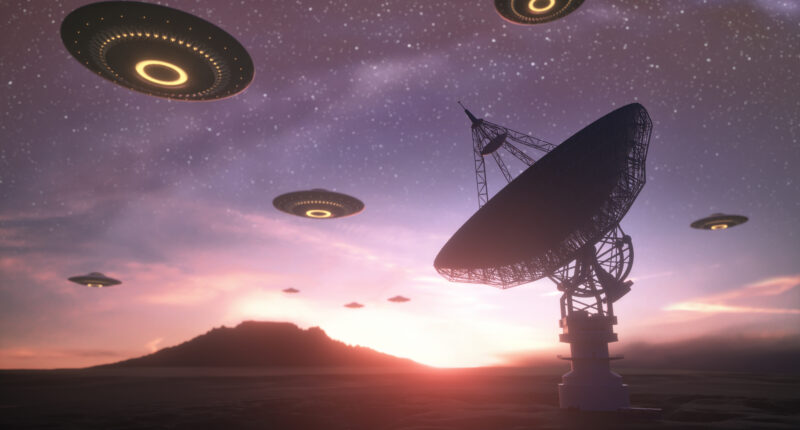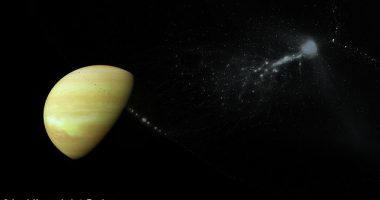SCIENTISTS have discovered a trove of mysterious radio signals – experts have speculated about their creator.
Canadian scientists discovered the signals – known as fast radio bursts (FRBs) – between 2019 and 2021.
The Canadian Hydrogen Intensity Mapping Experiment (CHIME) telescopes registered a record 25 blasts through the two years of experimentation.
A study by The Astrophysical Journal lays out a record number of spotted, repeating RFB blasts.
Scientists are working toward a deeper understanding of the blast’s origins, but some already have hypotheses about what made the noise.
They did specify the large blasts of energy do not indicate alien life.
“FRBs are likely produced by the leftovers from explosive stellar deaths,” Dr Ziggy Pleunis told the Daily Mail.
“By studying repeating FRB sources in detail, we can study the environments that these explosions occur in and understand better the end stages of a star’s life.”
Pleunis said that further discovery can uncover another question – what stars in other galaxies are made of.
“We can also learn more about the material that’s being expelled before and during the star’s demise, which is then returned to the galaxies that the FRBs live in.”
Most read in News Tech
WHAT WE KNOW ABOUT AN FRB
An FRB is a gigantic flash of light and energy in other galaxies.
The energy explosions sometimes make their way to other galaxies – including rays of light spotted through advanced telescopes on Earth.
The light registers on the electromagnetic spectrum and moves quickly through space.
The light is powerful – scientists have seen the rays from four billion light-years away.
The amount of energy disseminated from an FRB registers about 10 trillion times what humans use on Earth in a year.
WHAT’S LEFT TO DISCOVER
Scientists don’t know how to predict FRB activity.
They can spot the light rays after the interstellar events, but don’t know how to preemptively forecast the events.
Some FRBs repeat, often from the same area.
But non-repeating FRBs may flash once, to scientists’ dismay.


Scientists are also trying to verify the beliefs about FRB origins.
Until they can analyze more events, scientists maintain the hypothesis that FRBs come from dead stars.










